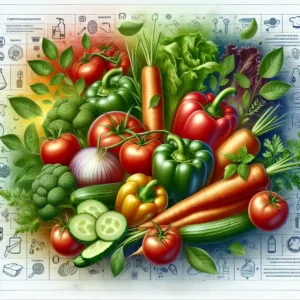
Breaking Free from the Cycle: Women Who Love Too Much and How to Heal
Love can be a delicate dance, sometimes leading us down a path where we give too much of ourselves. It’s hard to pin down the moment caring transforms into overextending, where affection becomes an unseen sacrifice. When love begins to hurt more than heal, it’s time to step back and understand why. For man, the pattern of women loving too much wraps its subtle chains around their hearts. They find themselves repeatedly drawn to those who aren’t emotionally available, trapped in a loop where they compromise their own values, mistaking intensity for intimacy. They often mistake this for devotion, unaware of how deeply it erodes their sense of self. This article is an embrace for those who find themselves in the echo chamber of unbalanced love. It lays bare the signs, unravels the causes, and gently guides towards the healing journey. Here, you’ll learn about recognizing destructive patterns, reclaiming self-worth, and setting the kind of boundaries that protect hearts. Welcome to the path of healing from loving too much. Signs of women who love too much In a world that sings praises of grand romantic gestures and eternal devotion, there is a poignant reality of women who love too much. These are women who find themselves ensnared in bad relationships, who see love as inseparable from suffering and sacrifice. For them, a meaningful relationship is one defined by its intensity and the depths of self they’re willing to give, even if it means plunging into an unhealthy relationship. It’s crucial to recognize the characteristics of women who fall into this pressing predicament. They are often nurtured in a dysfunctional family setting, which may leave them with an imprint that shapes their understanding of personal relationships. They may mistake turbulence for passion and inconsistent affection for a type of relationship that’s worth fighting for. Repeatedly, they indulge in a loveless relationship, holding on to the belief that love can conquer all, even when faced with destructive patterns. Reflecting on Robin Norwood’s illuminating work, it becomes clear that these patterns are not merely choices but often stem from painful life experiences, potentially rooted in childhood trauma. The message of ‘Women Who Love Too Much’ hits home for many – highlighting the painful junctures between desire for a healthier relationship and the reality of their situation. Being drawn to unavailable men Closely allied with the syndrome of loving too much is the propensity to be attracted to men who seem mysteriously unavailable. These are the men who can’t offer stability or a stable relationship — they might be entangled in their own set of issues like unresolved childhood conflicts that bar them from engaging in attainable love. These unavailable partners might be embroiled with addictions, narcissistic behavior, or a deep-seated fear of intimacy, making a healthier relationship an elusive goal. Women who love too much often endure these turbulent relationships because the men who seem ‘nice’ and available simply don’t provide them with the kind of emotional charge they’re conditioned to seek. They find themselves in an unstable relationship, ensnared in the hope that this time their unrelenting love will be enough to transform the unavailability into a secure and loving partner. Finding nice men boring This daunting perception that emotionally available men are ‘boring’ can be debilitating for a woman’s emotional wellbeing. It could be the camouflage for a deep-seated fear of genuine intimacy or a past littered with encounters of control and rejection. For such women, even the opportunity for choice in love feels marred by their inner turbulent needs. The quest for stability and healthier relationships often warrants a conscious effort to break away from these negative patterns. It might involve turning to professional help, like psychotherapy, where therapeutic relationships offer new models of attachment. The process isn’t a quick fix but a journey towards healing emotional wounds that draw them toward unhealthy relationships and learning to appreciate the beauty of stability and peace in the love offered by healthy partners. Compromising personal values for love A compelling need to be loved can sometimes push women to compromise their personal values in the hopes of securing affection from a partner. This “relationship addiction” leads to tolerating bad people, ignoring red flags, and justifying harmful behaviors. The belief that giving more will eventually persuade their partner to reciprocate can be blinding, leaving them clinging to the shadow of freedom of choice rather than embracing it wholesomely. Compromising personal values goes hand in hand with a lack of boundaries and an almost sacrificial narrative in love. The partner’s problems—addictions, anger issues, emotional detachment—are absorbed like painful sponges by these loving women, fostering a cycle of giving with little return. It’s a pattern pervading their existence, often inherited from a broken family or childhood devoid of security, creating individuals yearning for love but finding themselves imbued in destructive and painful iterations of it. The message is clear – women trapped in the cycle of loving too much often need encouragement to recognize their value, rebuild broken self-esteem, and forge new, healthier patterns in love and in life. Being drawn to unavailable men For many women caught in the web of loving too much, they find themselves magnetically drawn to men who are unavailable. Whether it’s emotional detachment, prioritizing destructive habits, the haunting of unresolved childhood issues, or fear of intimacy—the heartache is palpable. It’s a situation where the quest for love often traverses a turbulent path. Engaging with men who are married, absorbed in addiction, or showing narcissistic traits, women with these inclinations often mistake the pain for passion. The excitement of the chase, the allure of “fixing” someone, overshadows the reality of their emotional emptiness. Types of Unavailable Men Impact on Women Married Men Emotional Turmoil Addicts Neglect & Disappointment Fearful of Intimacy Abandonment Issues Narcissistic Traits Lowered Self-Esteem The sadness of such attractions is, even when faced with rejection and abuse, these women persist. They may find kindhearted and emotionally present men lack the appeal, deeming them “boring,” not realizing





